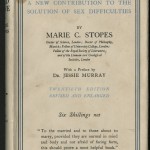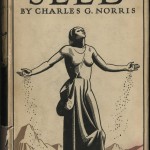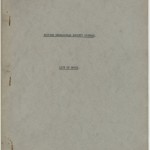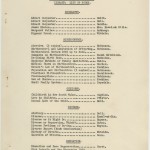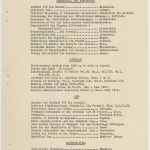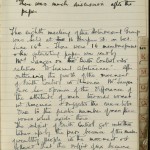Layne Craig, a lecturer in the Department of English at The University of Texas at Austin, recently used materials from the Ransom Center’s collections to supplement her class “Literature of the Birth Control Movement.” She writes about discoveries she made in the Center’s collections and how the materials were used in the class.
As a graduate student, I visited the Harry Ransom Center for its literary artifacts: Virginia Woolf’s letters to her niece Angelica Bell, Aubrey Beardsley’s illustrations of Oscar Wilde’s Salome, the Hogarth Press edition of Elizabeth Robins’s Ibsen and the Actress. I only recently learned, however, of the breadth of the Ransom Center’s resources on social science movements connected to literary history. I wanted to incorporate those resources into my fall 2010 class “Literature of the Birth Control Movement.” With Cline Curator of Literature Molly Schwartzburg’s help, I collected texts significant to the English and American birth control movements of the 1910s, along with texts highlighting the connections between birth control and the literary landscape of the twentieth century.
Some of the texts were foundational to the birth control movement. Margaret Sanger wrote “What Every Girl Should Know” in 1916, during the most politically radical period of her career, before she was charged with obscenity and fled to England to escape jail time. My students were able to look at the Haldeman-Julius Little Blue Book edition of that pamphlet, analyzing both Sanger’s left-wing, feminist activism and the working-class audience she sought to reach in that text.
In contrast, we looked at early editions of British “Mother of Birth Control” Marie Stopes’s decidedly middle-class-focused bestsellers, Married Love (1918) and Wise Parenthood (1919). Compared to Sanger’s mass-produced pamphlets, Stopes’s books look scientific and pedantic, with text-heavy dust jackets listing the author’s credentials. Inside, however, are flowery descriptions of “the sex tide in woman”: “If a swimmer comes to a sandy beach when the tide is out and the waves have receded, leaving sand where he had expected deep blue water—does he, baulked of his bathe, angrily call the sea ‘capricious’?” Stopes’s dual self-presentation as a scientist and a poet is a source of continual fascination for me, and these editions of her books helped bring that paradox to life for my students.
I also collected texts containing fictional depictions of birth control. Perfect for my uses was a manuscript of the third chapter of Mary McCarthy’s 1963 The Group, depicting a young woman’s visit to a birth control clinic in 1933. I love the title McCarthy gave this vignette: “Dottie Makes an Honest Woman of Herself.” I also made a serendipitous discovery: Charles Norris’s 1930 Seed: A Novel of Birth Control. The biblical imagery and art deco aesthetic of the dust jacket provoked conversation among my students, and the book itself, a family drama, has become part of my own work on the period.
Finally, with the help of Ransom Center graduate student intern Stephanie Bordy, I discovered a rich source of manuscript material in the newly cataloged British Sexological Society (BSS) collection. My students read a speech on “Sex Education before Marriage” given to the BSS by Jane Hawthorne, the clinician at Stopes’s Mothers Clinic, and pored over the handwritten notes of the society’s Heterosexual Study Group, to whom Sanger gave a paper in June 1920. We also perused the Society’s Library List, which included a section on “Birth Control” alongside sections on “Marriage,” “Homosexual and Intersexes,” “Venereal Disease,” and “Novels.”
My students completed a writing assignment based on the texts we examined, allowing them to visit the Reading Room themselves for a longer look at our materials. The project was as useful to me as to them, as it gave me a chance to explore the range of the Ransom Center’s collections, both in literary texts and in the cultures that influenced their production.
Click on thumbnails below to view larger images.

